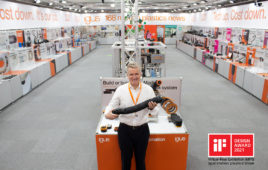A potential shortage of respiratory ventilators gave birth to the idea of letting two or more patients share one ventilators. This involves splitting air tubes into multiple branches so two or more patients can be connected to the same machine. You can even find a YouTube video describing this practice. In late March, at least one hospital in New York City began sharing ventilators between patients this way.
But ventilators should only be shared as a last resort. One problem: Patients sharing the ventilator must all have the same lung capacity. If one patient’s lung function improves or another’s deteriorates, one patient may receive the right amount of air but other may be out of luck.
A team of researchers from MIT and Brigham and Women’s Hospital say they have a way of splitting ventilators which could address many of the safety concerns. They have demonstrated its effectiveness in the lab, but they still caution it should be used only as a last resort during an emergency, when a patient’s life is at stake.
Basically the MIT team incorporated flow valves, one for each patient’s branch, that allow them to control the amount of air that each receives. “These flow valves allow you to personalize the flow to each patient based on their needs,” says Giovanni Traverso, an MIT assistant professor of mechanical engineering and a gastroenterologist at Brigham and Women’s Hospital.. “They also ensure that if one patient either improves or deteriorates, quickly or slowly, there’s a way to adapt for that.”The setup also includes pressure release valves that can prevent too much air from going into one patient’s lungs, as well as safety measures including alarms that go off when a patient’s air intake changes.
To create their setup, the researchers used parts that are normally available in a hospital. The parts could also be obtained at hardware stores and sterilized, the researchers say. A typical ventilator produces enough air pressure to supply six to eight patients at a time, but the research team does not recommend using one ventilator for more than two people, as the setup becomes more complicated.
The researchers first tested their setup on a ventilator split between a pig and an artificial lung. By changing the properties of the artificial lung, they could model many of the changing conditions that might arise in patients; they also showed that the ventilator settings could be adjusted to compensate. They later showed that they could ventilate two animals on one ventilator and maintain the necessary airflow to both.
The researchers are now trying to get emergency use authorization from the U.S. Food and Drug Administration which would grant temporary approval for using this approach on patients during the Covid-19 pandemic.
The researchers — Shriya Srinivasan, Khalil B Ramadi, Francesco Vicario, Declan Gwynne, Alison Hayward, David Lagier, Robert Langer, Joseph J. Frassica, Rebecca M. Baron, and Giovanni Traverso — published their work in the journal Science Translational Medicine. Title: A rapidly deployable individualized system for augmenting ventilator capacity.
You may also like:
Filed Under: Fighting COVID-19








